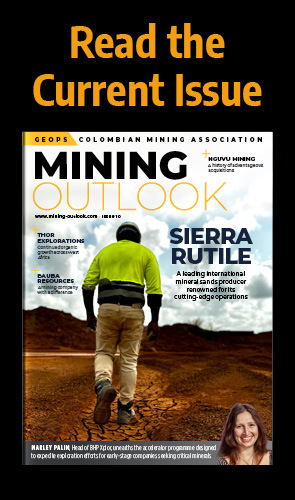Disruptions are the way of the world—pandemics, supply chain bottlenecks, inclement weather and wars have taught us that lesson in recent years. Grace Nam, Strategic Solutions Manager at Laserfiche, analyses the potential solutions.
The 2020-23 global semiconductor shortage arrived in a ‘perfect storm’ of economic conditions. The demand for work-from-home technology accelerated while chip production facilities shut during lockdowns; the ongoing China-US trade conflict continued; the Russia-Ukraine war, and freak events like severe weather storms and factory fires further contributed to the squeeze.
Fortunately, it seems that the chip shortage is in the rearview. But while sectors worldwide are urgently returning to normal operations, semiconductor scarcity and its impact on businesses must not be ignored or forgotten—instead, it must be a crucial lesson. According to Goldman Sachs, at least 169 industries were impacted by the shortage; PlayStation 5 consoles became almost impossible to buy; Apple had to slash its iPhone manufacturing targets; Toyota was forced to cut vehicle production by as much as 40 percent.
The crisis shone a harsh light on the fragile nature of the supply chains for some of the world’s most important products. Moving forward, businesses need to ensure that their manufacturing processes are as resilient as possible so they can safely navigate any future disruption. So, let’s explore ways in which manufacturers can boost efficiency and keep up with customer demand, even as inflation and supply chain issues continue to put pressure on the industry.
A key lesson from the crisis is that agility, and the ability to pivot, have become more important than ever. The world is changing, and traditional materials, suppliers, and ways of working can often no longer be relied upon. Particularly in light of climate change and electrification, now is a good opportunity for manufacturers to review their processes from the bottom up and bake in new or alternative approaches and materials that can be turned to in times of crisis.
One example of this is the electric vehicle manufacturer Tesla. The company uses several mission-critical chips in its control, entertainment, and even self-driving systems. However, it managed to weather the full impact of the chip shortage by pivoting to using new types of semiconductors and working to combine chips from different sources. In a 2021 letter to shareholders, the company wrote: “In Q1, we were able to navigate through global chip supply shortage issues in part by pivoting extremely quickly to new microcontrollers, while simultaneously developing firmware for new chips made by new suppliers.” A similar ‘start-up mentality’ may be required for organisations looking to ride out the next crisis.
Accurately forecasting demand for products and materials has long been an important part of strong profit levels and continuous business success. Yet back in 2020, just eight percent of organisations had implemented real-time, automated supply chain processes for ultra-precise predictions. This lack of digital readiness was likely another driving factor behind the lingering semiconductor crisis.
From now onwards, manufacturers should look to integrate machine learning (ML) into their supply chains. This way, predictions of material demand will improve over time, resulting in more efficient stocking and production planning, building resilience into organisations’ strategies. New product anomaly-detection models can even help businesses identify whether spikes or drops in demand are relevant or coincidental, informing any required adjustments.
Semiconductor manufacturers, too, should take a step back during this time period to re-evaluate efficiency and implement technology tools that will support better data analysis, information sharing and more resilient operations. McKinsey research has found that artificial intelligence (AI) enabled supply chain management has “allowed early adopters to improve logistics costs by 15 percent, inventory levels by 35 percent, and service levels by 65 percent, compared with slower-moving competitors.” So, it’s no surprise Gartner expects that within three years, “more than 50 percent of supply chain organisations will use ML to augment decision-making capability.” Manufacturing businesses should look to follow suit.
Navigating a materials crisis isn’t solely dependent on the availability of the materials themselves. Every employee and department in the organisation must be also on the same page, from the boardroom to the shop floor, to ensure appropriate business continuity. Therefore, centralised document depositories and connected legacy systems are crucial to a mid-crisis transformation.
Here, a cloud-based digital ecosystem, powered by decision-driven process automation, will prove invaluable. Businesses will be able to mitigate operational interruptions by unlocking access to important documents from anywhere, on any device. Low-code and no-code tools will enable any staff member to bridge technology gaps and create seamless connections between processes and applications, ensuring departmental alignment and transparency. Harmonised records and data will give teams access to real-time information and insights, sparking active collaboration. Plus, robotic process automation, driven by AI and ML, will take care of repetitive tasks, so human workers can focus on driving smart actions that help the organisation overcome external crises.
Even when demand is low, process efficiency is key — and can even be a competitive advantage. If a manufacturer’s process times are longer than its competitors, customers are likely to take their business to the competition. For example, optimised automated request for quote (RFQ) processes can speed decision-making and create a better first impression for prospects looking to partner with a modern, responsive manufacturer. Organisations should consider all processes — from human resources (HR) to sales, administrative to customer-facing — when assessing operational efficiency and where it can be improved.
BE PREPARED FOR ANYTHING
In the wake of the global COVID-19 pandemic and semiconductor shortage, with inflation and a recession looming, manufacturers today need to be prepared for anything. Organisations should continuously assess supply risk and communicate insights across their business, ensuring all departments and stakeholders are aligned. This requires a holistic approach to technology infrastructure strategy, prioritising operational efficiency and process automation. Real-time feedback will enable real-time adjustments, and the installation of new technologies will transform how employees tackle operational challenges.
Ultimately, no one can predict how any subsequent manufacturing crises will look. But as many organisations discovered in recent years, it’s far better to be safe than sorry. Now is the time to take steps to mitigate downstream disruptions. After all, the organisations that act decisively today can expect watertight resilience, whatever the economic conditions, long into the future.





























